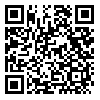Volume 11, Issue 4 (2024)
CLRJ 2024, 11(4): 127-157 |
Back to browse issues page
Download citation:
BibTeX | RIS | EndNote | Medlars | ProCite | Reference Manager | RefWorks
Send citation to:



BibTeX | RIS | EndNote | Medlars | ProCite | Reference Manager | RefWorks
Send citation to:
norouzi M, Karimi Riabi E. A Study of the Characteristics of Literary Adaptation from Kalila and Dimna in Two Creatures Ikhnilat by Aleksey Remizov. CLRJ 2024; 11 (4) :127-157
URL: http://clrj.modares.ac.ir/article-12-72975-en.html
URL: http://clrj.modares.ac.ir/article-12-72975-en.html
1- Allameh Tabatabai’ university , mah.norouzi@atu.ac.ir
2- University of Tehran
2- University of Tehran
Abstract: (47 Views)
Kalila and Dimna is one of the most enduring and influential literary works in the world which has been translated into various languages and its allegories have long been the source of adaptation for various authors in the world. There can be found in Russian Literature many examples in the fables of Loe Tolstoy and Ivan Krylov. Aleksey Remizov, one of prominent Russian authors of the twentieth century has, with an emphasis on the adaptation from canonical and old literary works, withdrawn and reflected many features, core ideas and even sentences in his own literary works. Remizov has produced with an emphasis on the adaptative Eslavic translation of Kalila and Dimna a book entitled Ikhniat which we intend to, based on a descriptive-analytical methodology and a comparative study of selected works, which similarities and analogies there are in characters and events and what is the writer’s approach in these literary adaptations. Studies have revealed that Remizov story has been penned by the first two chapters of Kalila and Dimna and there has only been the main story of two jackals named Estifanit (Kalila) and Ikhnilat (Dimna) as the underlying source of inspiration for the author. Remizov in his introduction _ by referring to the story of Dr. Borzuyeh _ and in his final story _ by referring to the historical background of the literary work_ has had many adaptations and references to Kalila and Dimna.
Keywords: comparative literature, classical literature, Kalila and Dimna, literary adaptation, Aleksey Remizov
Article Type: Original Research |
Subject:
Comparative research
Received: 2023/12/16 | Accepted: 2024/03/11 | Published: 2024/03/15
Received: 2023/12/16 | Accepted: 2024/03/11 | Published: 2024/03/15
Send email to the article author
| Rights and permissions | |
 |
This work is licensed under a Creative Commons Attribution-NonCommercial 4.0 International License. |








